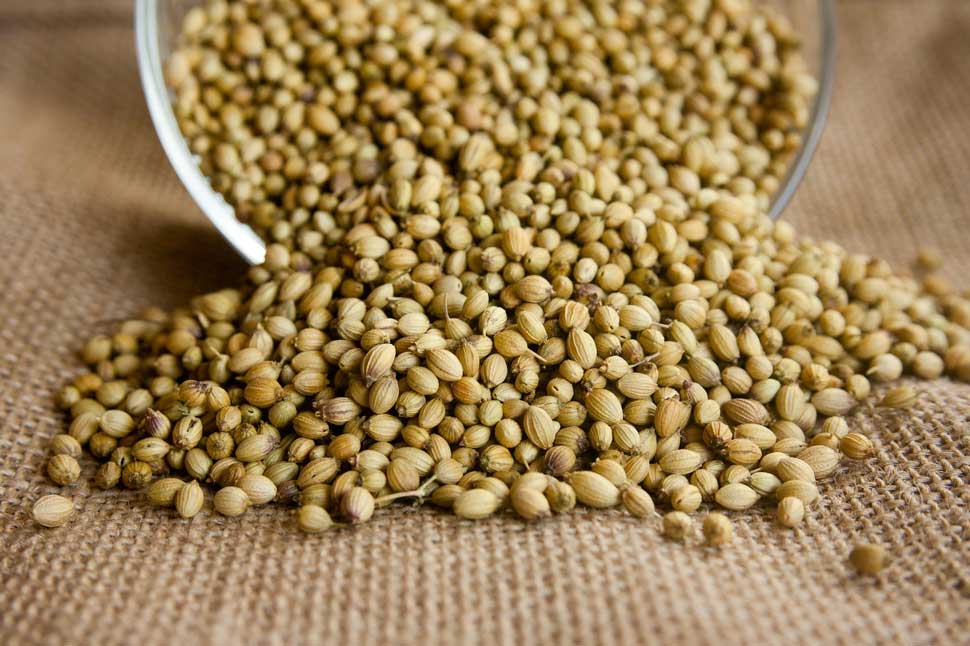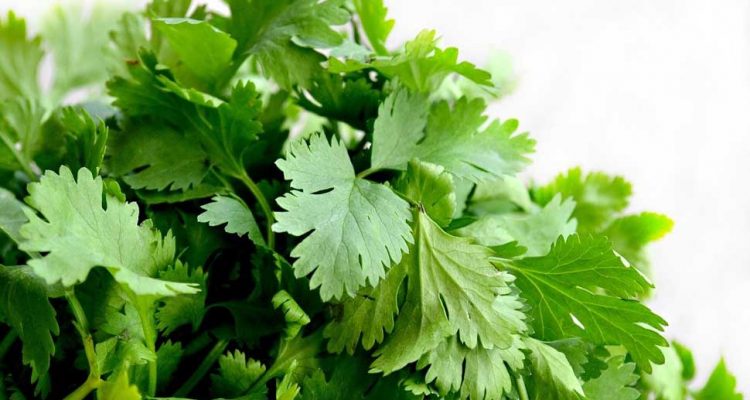First of all, we can remember that Cilantro and Corriander are the same plant. At first, we have Cilantro, but, age and climate changes will transform Cilantro into a bolted Corriander.
When growing Cilantro, we can try those seeds which have more bolting resistance and ensure we can try to keep them cool, since they will grow fine in sun and part shade.

Is it easy to grow Cilantro? Well, Cilantro can be cared for similar to Lettuce as it grows, since its light nutrient requirements around 400ppm fertilizer will be sufficient.
However, one difference is that the seeds can be germinated in darkness, unlike lettuce which can be sprinkled on top of starter mix with light during germination.
Although there are many ways to start and grow Cilantro, I will explain what we typically do, which seems to work for us.
First, we buy the seeds. The seeds are affordable and are a good deal when you buy the packs with 1000 or more from seed companies online.
Depending on where you live, some varieties will be give better results than others.
Germinating the Corriander Seeds For Growing Cilantro
Like many articles throughout this website, we start our seeds under lights while attempting the best practice for germination and growth for each particular plant.
However, although most seeds can be sowed directly, if desired. But, this method will deliver lower germination rates, slower germination rates and slower growing plants, unless timing is perfect.
Note that if the timing and season is perfect for germination, they could have had that extra jump start under lights with a heat pad when the outdoor setting was inadequate.
Starting Cilantro is very easy because they do not need light for germination. Therefore, we can use a 72-cell flat with a starter mix(peat / 5%-10% vermiculite) that is saturated with water, bury each seed 1/8-inch deep, cover and place the tray with a clear 4-inch dome on top of a heat pad.
As soon as some seedlings emerge, we can turn on the lights and keep them positioned 3 inches above the tops of the seedlings.
With new seed, we can get high germination results, but, if we put 2 in each cell we should definitely have over 1 plant per cell. If some cells don’t sprout new plants, we can use a tiny spoon, or even a 1/4 teaspoon measuring spoon and transplant them over. If seeds are kept in a cool, dry place, they may germinate fine for the next few years too.
At this point, we can grow them here for up to 5 weeks or move them to a greenhouse or outdoors at any time, depending on the weather.
Transplanting
When the time comes, we can move them into our pots or garden. What works great for transplanting larger numbers is a 1×2 stick of wood with a pointy tip. We can cut the tip with a mitre(chop) saw, circular saw, jigsaw, sawzall, hand mitre saw or a wood saw. The cut bottom looks like a cement trowel.

4-inch long piece of 1×2 inch wood cut into a trowel shape at one end
Once we transplant, we can feed regularly using a 400ppm fertilizer formula in hydroponics with ph 5.6-6.5, or some other technique we use. With hydroponics, regular saturation of the medium will help reduce chance of bolting because root temp will be in a more optimal range.
Systems of Choice
Since Cilantro is a rather small, non-staking plant without a very large root system, we do have many options for which to transplant them.
Vertical Garden With Stacked Pots
Our system of choice are a system of 5-7 stacked vertical pots. This gives us plenty of standing room to work with and anywhere from 20-32 plants grown in a minimal area near 4 square feet.
To build a vertical garden system like this, we use the instructions here.
Asides from our go to system, we have many other hydroponic and dirt options to choose from. The following list of hydroponic system can be built with supplies from hardware stores / hydroponic shops.
- Flood and Drain System
- Top Feeding System
- Top Feed Vertical Pipe System
- Top Feed Hanging Pipe System
- NFT System
A word about growing hydroponic Cilantro on a larger scale. Although vertical growing looks great in concept, many farms have experimented with that and have returned to single layer hydroponic NFT systems due to the uniform growth as being one major reason.
A major vendor for Cilantro NFT systems is Crop King in the USA.
Dirt
Growing in dirt is not much different in concept than hydroponic. The key is that plant receive adequate amounts of required nutrients and water. However, it is more back-breaking work and can leave Cilantro quite dirty because rain will splash dirt back on top of the edible leaves.
Harvesting
With Cilantro, we can pick the whole plant and replace, or keep picking outside leaves and consume the same plant for a couple of months.
Temperature Concerns
Growing Cilantro is very easy. Unfortunately, unlike many strong lettuce varieties, it does bolt rather easily. On a personal note, we have had it bolt even when a short, warm spell had arrived in early spring.
Thus, if we have a climate controlled greenhouse under 75 degrees F, or can easily move our plants to a spot with this temperature when things heat up outdoors, we should be fine. Otherwise, growing this plant can become a disappointment.
Once it bolts, voila, we have Corriander from that point on. The stalks will become wood-like, and the plant will have no resemblance to Cilantro.



